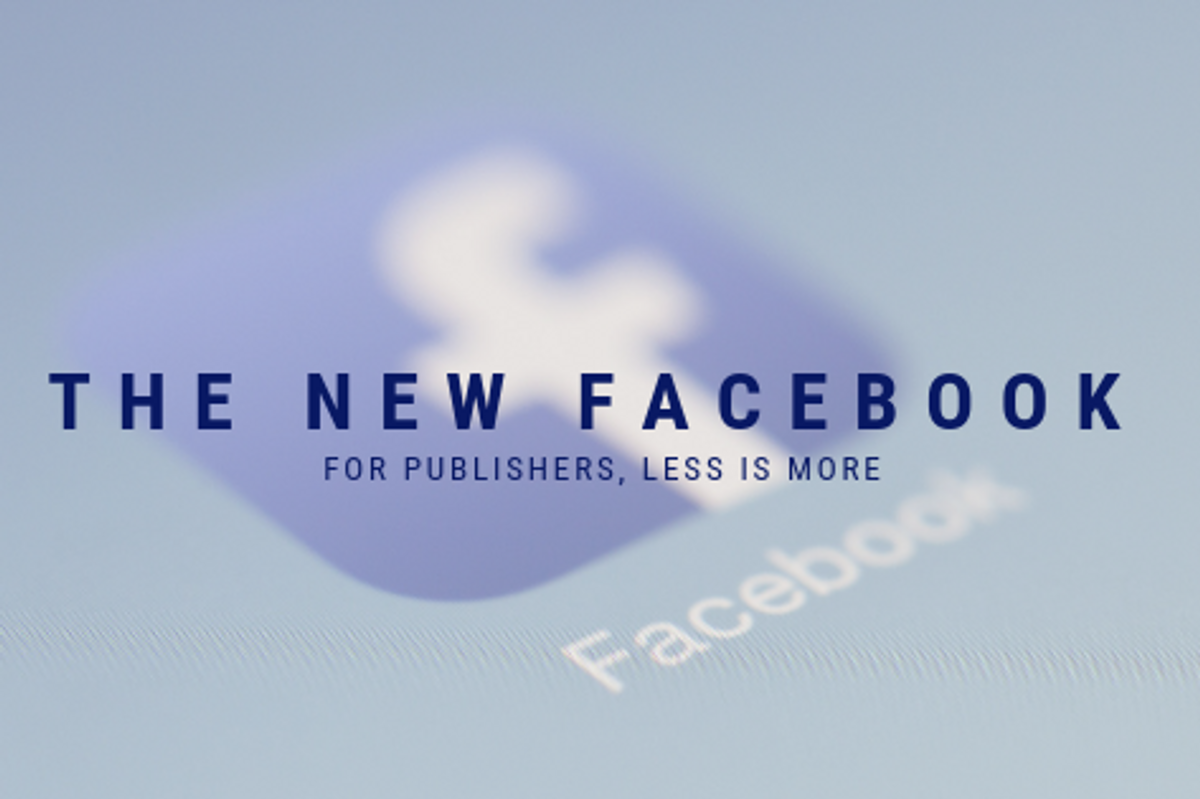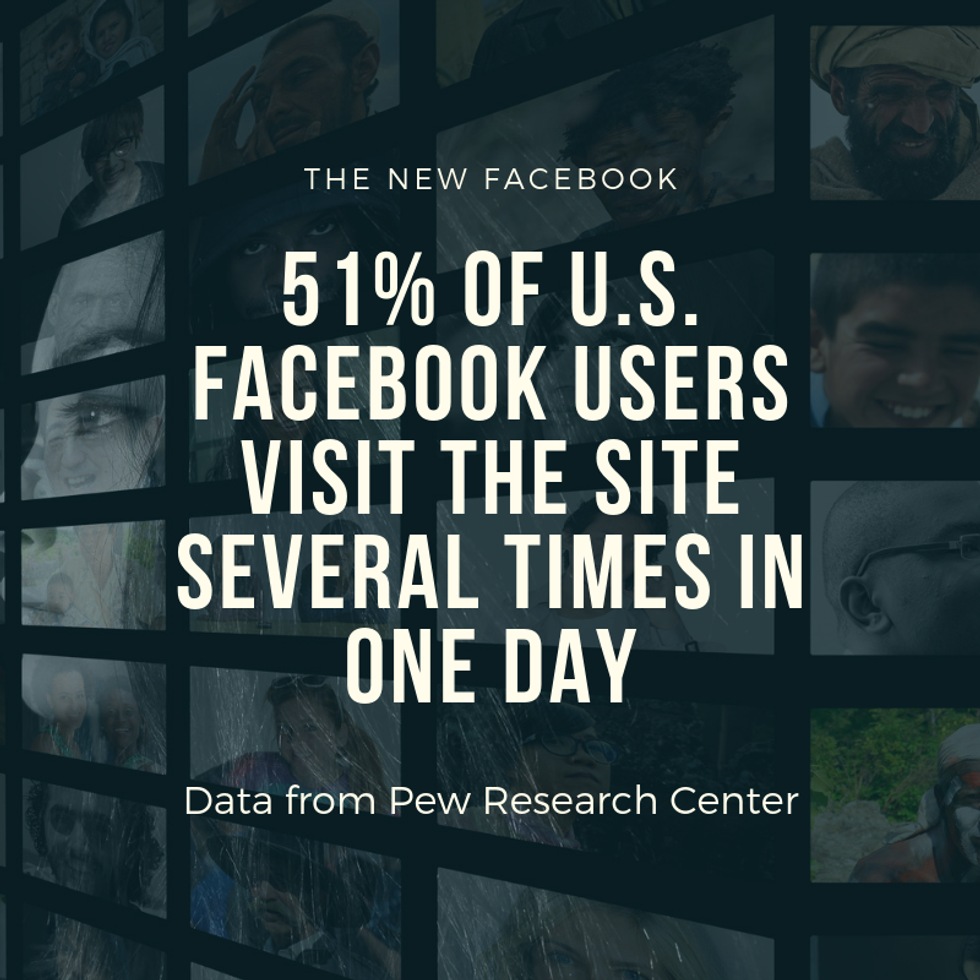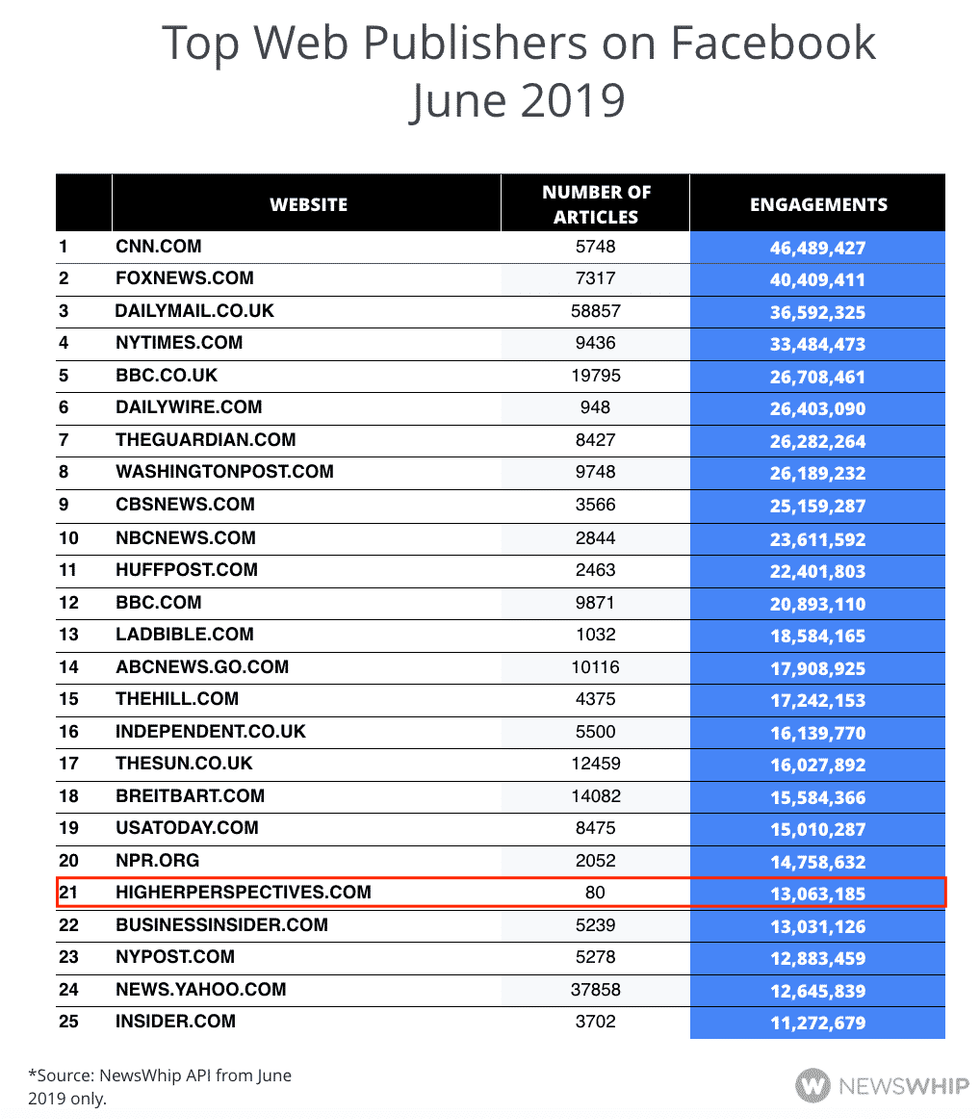
Is Facebook Still Worth It?
It's been more than three years since Facebook's fake news fallout of 2016, and more than one year since the friends-and-family algorithm update that deprioritized updates from Facebook Pages. Now more than ever, publishers are left wondering where they stand on the platform, and more importantly, how much effort they should devote to it.
Facebook's shaky ground over the years has created space for Instagram, search engine optimization, and YouTube to fill in the gaps and stir more audience growth. Still, Facebook owns much of the world's social audience with 69% of adults in the U.S. reporting to actively use the platform, and 2.38 billion monthly active users worldwide.

How to tap into Facebook's massive, but seemingly complex, audience remains a puzzle for most publishers. While there certainly is less dependency on the platform than ever before, opportunity exists to make bountiful strides on the network without making it part of your core strategy. And given that every digital media team is dealing with less resources, Facebook is a good place to simplify and strike a narrowed focus on what works. Let's take a look at what's new at Facebook and what kind of content is generating the reach publishers need.
What's New on Facebook
Facebook continues to make frequent tweaks and updates to improve its transparency practices as a result of the 2016 U.S. presidential election. Worldwide, political ads must now go through a transparency process before approval. On the other side, the platform has expanded its "Why am I see this ad?" function on sponsored content so that users can see how they were targeted by marketers. Users also have more control over what appears in their News Feed.
The more data Facebook can provide to both its marketers and its users has certainly been the platform's priority in 2019. After fixing a vulnerable bug, Facebook brought back its Custom Audiences feature, which allows marketers to see an estimate of their campaign's reach so they can better determine bids and budget. The function was previously deactivated for more than a year. The return of Custom Audiences, and the platform's continuing efforts to open up data distribution, is a great segue into how publishers can get the most out of the platform without exerting too much time and effort.
Leverage Where You Can: Simple Strategy Steps
The hidden treasure of Facebook continues to be its massive audience. When shaping a strategy for the platform, it's now better to do more with less. Instead of trying to achieve massive engagement like in 2015, it's more fruitful to aim for targeted wins through audience discovery. Learning more about who consumes your content on Facebook and what they like to read, rather than casting a wide content net and hoping it sticks, is what matters.
Know Your Audience: The return of Facebook's Custom Audiences is a great reminder that you can learn a lot about your Facebook followers, and people like them, through the network's tools. Small ad spends on Custom Audiences by engagement and customer lists, and corresponding Lookalike Audiences, can teach you a lot about what kind of content works on your page and the makeup of who is interacting with it.
Similar ad buys that target interests or basic demographics can also be beneficial for audience discovery at a reasonable cost. Learning more about your audience is knowledge that can transcend Facebook and help shape your organization's holistic growth strategy.
Pay Attention to What Is Trending: Distributed publishing isn't linear. Different content and content mediums perform differently across platforms. Analyze your Page's data, understand what your best-performing posts are, and devote energy to creating similar content.
News and politics tend to dominate referral traffic on the platform. Even though you may not be a news publisher, think of what kind of content you can create that can spark emotion and conversation in a similar manner.
Don't Be Afraid to Mix It Up: While it's important to stick to what resonates with your audience, it's not bad to beta test new ways to reach them, especially if your numbers are plateauing. For example, social and native videos can still generate millions of shares on the platform. If you decide to try something experimental, like say a video or a custom image, remember it's all about doing more with less. Spending extra time on a new type of post can be the entirety of your efforts on Facebook for the week and still see big returns.
For example, RebelMouse-powered Higher Perspectives ranked in the top 25 publishers on Facebook in June 2019 with just 80 articles published, according to NewsWhip :

So while your efforts on Facebook don't have to be reminiscent of what they were several years ago, it's still a place for growth.
Less Is More
Data from the social listening tool Parse.ly found that referral traffic was roughly the same between Facebook and direct traffic sources. Direct traffic is acquired through communication methods such as text messages and email. While direct traffic can prompt users to view a wider range of content, like in an email marketing campaign, Facebook referrals usually come from one single article.
"The chances of you 'going viral' on Facebook are smaller, but the impact from a Facebook referral boost can be much bigger on a per article basis." — Parse.ly Data Summary

Lessons From Our Data
Thanks to the massive scale of our platform, we live close to data-driven content from media properties of all sizes. Because of this, we are often able to identify social trends like algorithm changes before they even happen. When we spot major shifts or small swings in what's creating movement, we're able to help guide our clients' strategy to make sure they're seeing success across social. This means sites on RebelMouse often avoid any tanks or plateaus in growth.
Here are some social strategy lessons we've learned from monitoring data closely:
Utilize Instant Articles: If you want to grow website traffic seriously, your content needs to travel across channels easily. Facebook Instant Articles is an elegant format, particularly given the use of videos in the splash media. Instant Articles may not direct readers to your website immediately, but it's a tool that provides an unobtrusive, memorable experience to users that fuels loyalty. Click here to learn more.
Take Advantage of Facebook Live: Facebook still favors native video on the platform. Facebook Live is a great opportunity to amplify reach and create video material that can be repurposed into new and evergreen content. We have a client on our platform that repurposes live videos as the main subject of articles on their site, and the posts perform extremely well.
Grow Organically: Facebook's ability to spread content organically through Pages with high engagement is still one of its golden features. Users who love to share content on high-engagement Pages help spread quality content without spending a dime. This sharing economy is how media companies like The Dodo was able to create an empire. Click here to learn more.
Make Page Speed a Priority: You can't get the same traffic out of Facebook's algorithms without better site performance scores, and a slow page speed can tank your overall SEO ranking. Google's PageSpeed Insights remains the gold standard when it comes to page speed measurement tools. Click here to learn more.
Spark Conversation: Engagement is the key metric for social, not impressions. Make sure your content strategy is built around an ongoing conversation about your brand or company's core objectives. This means always engaging in post comments, asking questions in captions or at the end of articles, and following up on popular topics.
If you would like to see a boost in your Facebook referral traffic, or learn how you can better optimize your social strategy, request a proposal today. We would love to start working together.















































































